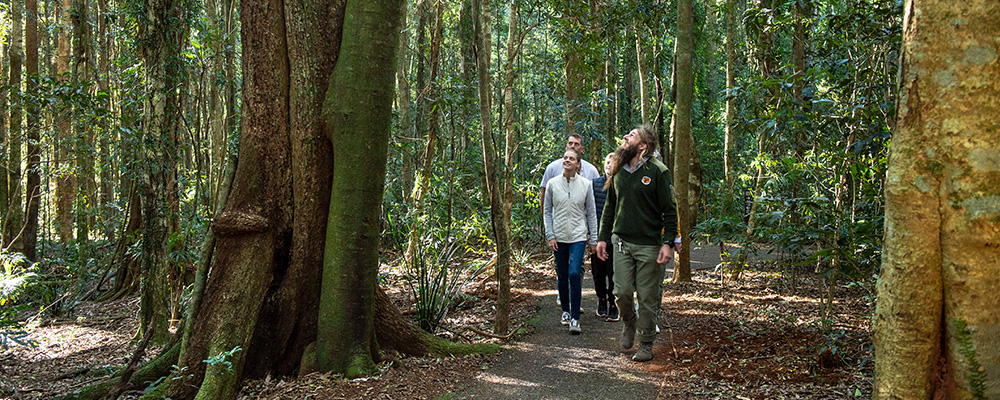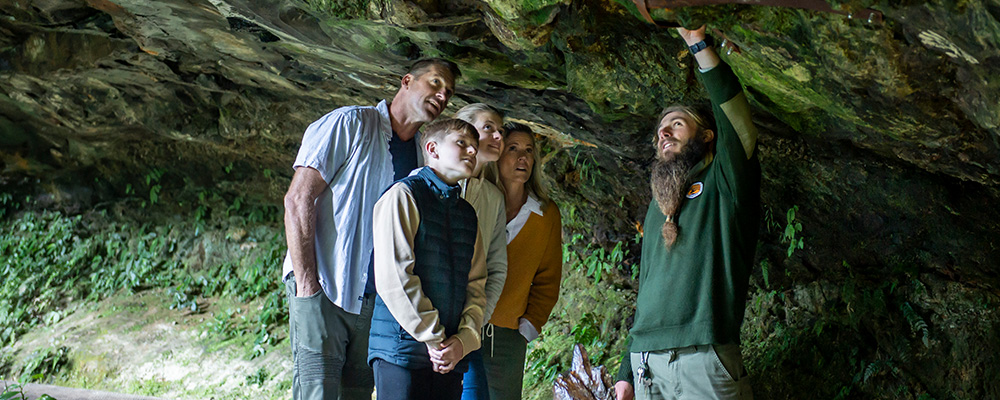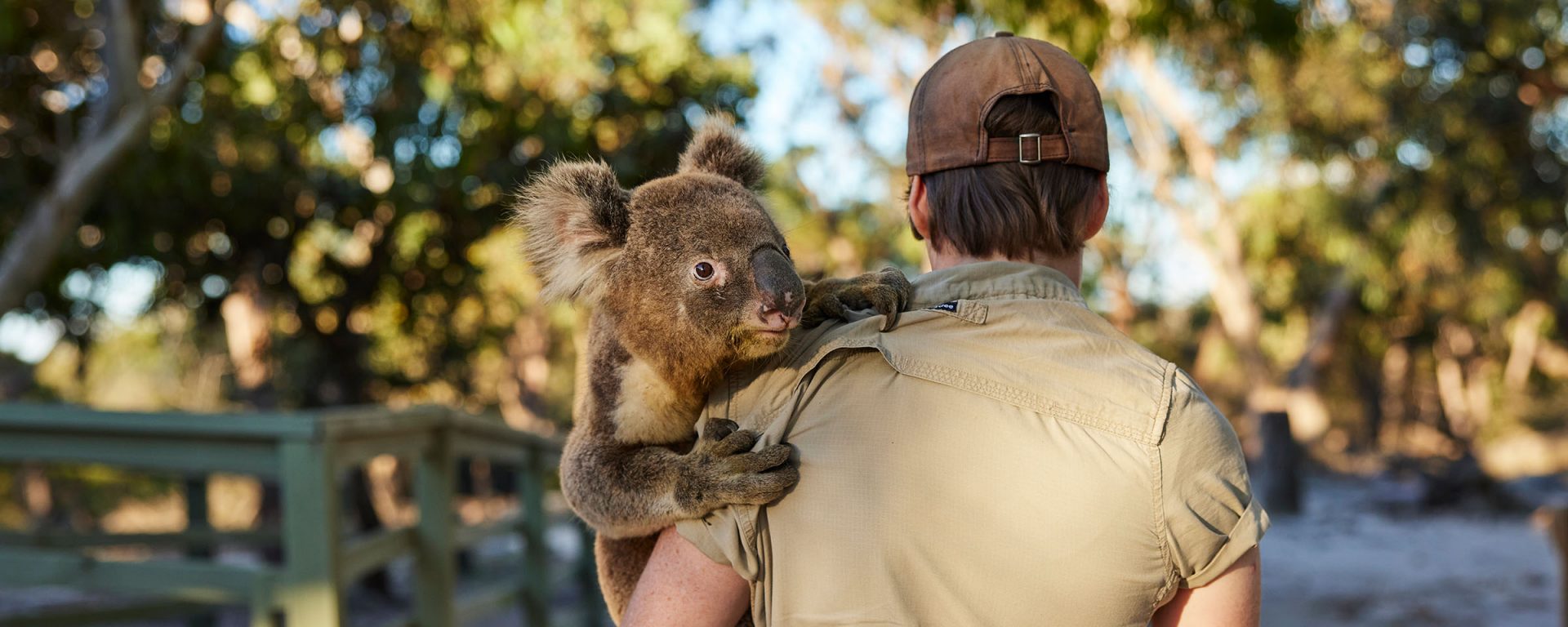Picture this: you’re out in the wild, surrounded by landscapes that take your breath away. And you’re not just exploring, you’re protecting these wonders for generations to come. That’s the life of a park ranger. Sounds awesome, right? But how do you become a park ranger in Australia?
We’re going to break it down for you. Here’s what we’ll cover:
- What does a park ranger do?
- Where do park rangers work?
- What education do you need to become a park ranger?
- What are the essential park ranger skills?
- Next steps

What does a park ranger do?
Being a park ranger isn’t just a job – it’s also an adventure. Every day presents new challenges and opportunities to preserve our natural wonders. On any working day you could do any, some or all (although, granted, that would be a lot) of the following.
- Conserving nature: Rangers work to conserve and protect our natural environment. Literally saving nature – its biodiversity and its essential ecosystems. From patrols to monitor park resources, including native plants and animals, to completing assessments to guide how the park functions, it’s all about keeping Mother Nature happy.
- Welcoming people to the wild side: As a ranger, you’ll be the friendly face helping visitors explore these awe-inspiring habitats. You’ll ensure visitors know the park rules, promote environmental awareness and clue them in on the best spots. Share the love for the great outdoors.
- Protecting in the heat of the action: Rangers tackle wildfires head-on, making sure our forests stay safe and sound. You’ll participate in fire prevention efforts, conduct controlled burns and help coordinate emergency responses during conflagrations.
- Keeping up to scratch: Trails, campgrounds, visitor centres – rangers keep our parks in tip-top shape, making sure everyone has a good time while staying safe.
- Spreading the green love: You may be tasked with conducting schools programs, guided tours and activities in local communities to promote environmental protection and sustainable land management.
- Answering the call: When trouble strikes, you’ll be there. Park rangers conduct search-and-rescue operations and provide first aid assistance when needed.
- Contributing to science: Rangers get in on the scientific scene, assisting with biodiversity surveys, ecological studies and other research projects to bring new knowledge to light.
- Preserving history: Our past is as important as our future. Rangers team up with First Nations peoples to protect our historic sites, keeping their stories alive for generations to come.
- Managing a team: You’ll guide volunteers to help keep parks pristine. From weeding to building, it’s all about teamwork.
Where do park rangers work?
Park rangers in Australia live the dream every day. They have the privilege of working in some of the most jaw-dropping and ecologically diverse landscapes on the planet. Check out these epic places where you might find yourself stationed.
National parks and reserves: From lush rainforests to rugged outback landscapes, each state and territory boasts its own slices of paradise. Park rangers are the guardians of these areas, keeping them natural, wild and safe for everyone to enjoy.
Marine parks and coastal reserves: With thousands of islands and endless kilometres of coastline, our marine parks are like underwater wonderlands. Ranger duties include protecting marine life, making sure everyone follows the rules, and promoting eco-friendly practices for fishing and boating.
World Heritage sites: Australia is blessed with numerous UNESCO World Heritage-listed sites, including the Great Barrier Reef, Kakadu National Park and the Tasmanian Wilderness. Rangers are the protectors of these iconic locations, making sure they are undamaged and resilient for generations to come.
State forests and conservation areas: In addition to national parks, many states and territories in Australia have forests, conservation areas and regional reserves managed by park rangers. Work here is all about preserving the peace and beauty of nature. Plus, giving folks the chance to reconnect with the great outdoors.
Indigenous Protected Areas: Respect for culture meets conservation in IPAs. These areas are managed by First Nations communities, blending ancient wisdom with modern know-how to keep Country thriving. Park rangers working in IPAs are all about honouring tradition, protecting the land and also strengthening bonds with heritage.

What education do you need to become a park ranger?
Firstly, to kickstart your journey, you’ll want to study a degree that aligns with your love for the outdoors.
A course like Charles Sturt University’s Bachelor of Environmental Science and Management1.
It’s the ideal proving ground for your passion – covering a wide range of skills and knowledge on lots of different topics, from GIS systems and data to ecology and biodiversity.
But don’t just hit the books – get out there and get your hands dirty! Internships. Volunteering gigs. Seasonal jobs in national parks. All are great opportunities to gain practical experience and boost your résumé.
Oh, and don’t forget your survival gear. First aid certification is also a must. And if you’re eyeing a job in a marine park, consider getting your scuba diving certification and a commercial coxswain’s certificate (a coxswain is someone in charge of a boat, particularly its navigation and steering).
What are the essential park ranger skills?
Besides knowing your kangaroos from your koalas and feeling the call of a conservation career, there’s a bunch of soft skills that every top-notch park ranger needs.
- Strong communication: To chat with visitors, team up with other rangers, and spread the word about conservation.
- Problem-solving: Whether it’s fixing a broken trail or tackling unexpected challenges in the great outdoors, you’ve gotta be quick on your feet.
- An eye for detail: From counting creatures to keeping facilities in good nick, rangers must pay attention to detail to ensure everything is as good as it can be.
- Collaboration: No lone wolves here! Teamwork makes the dream work, whether it’s with fellow rangers, government departments or the local community.
Moreover, don’t forget about staying fit. Being a ranger can mean trekking through rough terrain and working up a sweat, so keep those muscles movin’.
Next steps
While there are no prerequisites to get into a Charles Sturt degree, it’s probably a good idea to take some science subjects as part of your HSC, particularly biology. Though, if you’re interested in becoming a park ranger, you may already have some experience with science in high school.
Then you’re looking to score a minimum ATAR of 60 to snag an offer into the Bachelor of Environmental Science and Management.

Although here’s a cool hack: you can also apply for our enviro degree through the Charles Sturt Advantage. It looks at your soft skills and might hook you up with an offer before you face your Year 12 exams
Got more questions about how to become a park ranger? Get in touch with our team of uni advisers for the lowdown.
1CRICOS: 103015C
Banner image: Ranger with a resident koala at the Walkabout Wildlife Sanctuary, Calga. © Destination NSW


You must be logged in to post a comment.